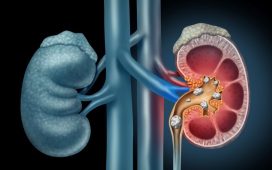Immediate adoption at hospitals seen with decrease in traditional laparoscopic procedures
TUESDAY, Jan. 14, 2020 (HealthDay News) — Hospitals that launch robotic surgery programs have a broad and immediate increase in the use of robotic surgery, accompanied by a decrease in traditional laparoscopic minimally invasive surgery, according to a study published online Jan. 10 in JAMA Network Open.
Kyle H. Sheetz, M.D., from University of Michigan in Ann Arbor, and colleagues used clinical registry data from Michigan (Jan. 1, 2012, through June 30, 2018) to assess trends in the use of robotic surgery for common procedures for which traditional laparoscopic minimally invasive surgery was already considered a safe and effective approach.
The researchers identified 169,404 patients (mean age, 55.4 years; 53.5 percent women) at 73 hospitals. The use of robotic surgery increased 8.4-fold (1.8 percent in 2012 to 15.1 percent in 2018), with the magnitude even greater for some procedures (inguinal hernia repair, 0.7 to 28.8 percent). In the first four years after hospitals began performing robotic surgery, its use increased 8.8 percent. This increase was associated with a decrease in laparoscopic surgery (53.2 to 51.3 percent), which had previously been increasing 1.3 percent per year before adoption of robotic surgery.
“These findings highlight a need to continually monitor the adoption of robotic surgery to ensure that enthusiasm for new technology does not outpace the evidence needed to use it in the most effective clinical contexts,” the authors write.
One author disclosed financial ties to ArborMetrix.
Copyright © 2020 HealthDay. All rights reserved.








